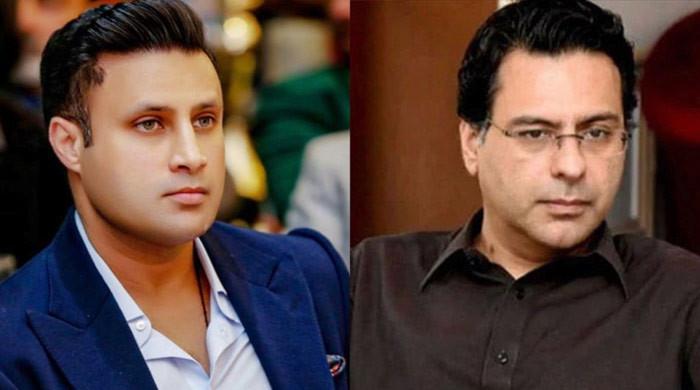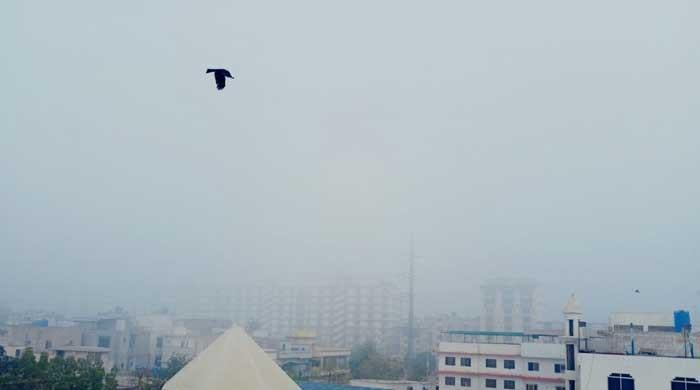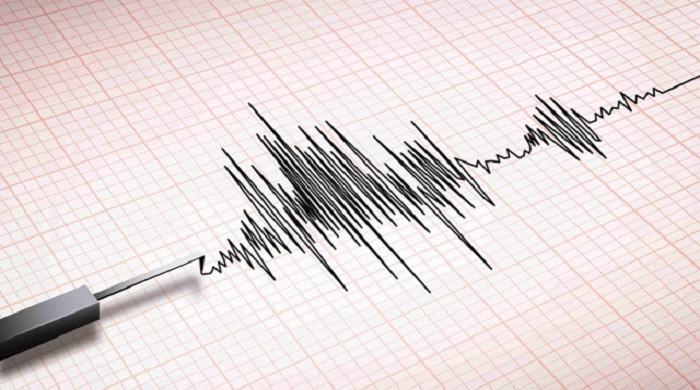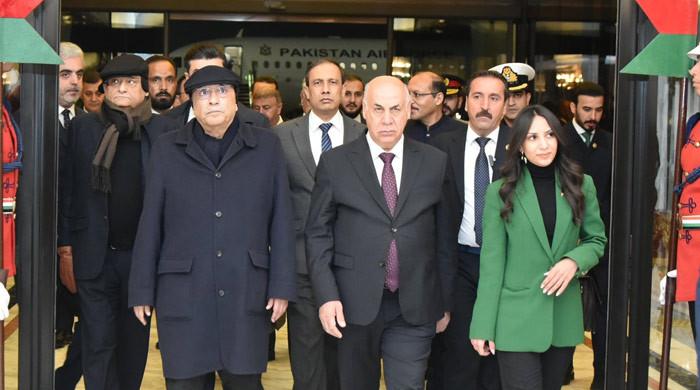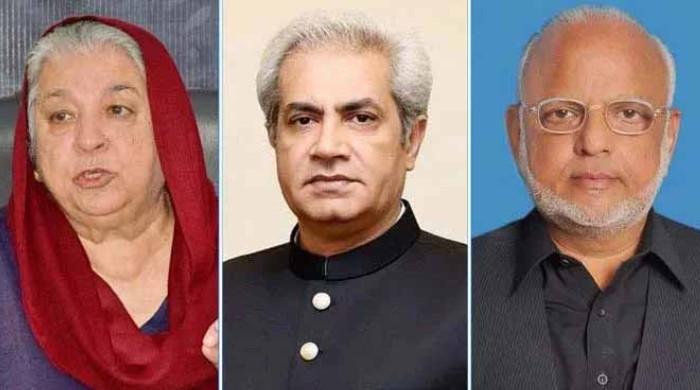Arshad Malik failed to prove he acted under 'duress, intimidation', finds inquiry report
Arshad Malik was dimissed by the Lahore High Court on July 3 in the light of the inquiry report
July 12, 2020

LAHORE: The inquiry report that probed former accountability judge Arshad Malik has found that he was unable to establish that he acted under “duress or intimidation” during the investigation of the video scandal implicating the judge.
Justice Sardar Ahmad Naeem of Lahore High Court had held the inquiry, as assigned by the LHC administrative committee.
The inquiry judge had recommended the imposition of a major penalty on district and sessions judge Malik, who, during his posting as presiding judge of an Islamabad accountability court, convicted former prime minister Nawaz Sharif in the Al-Azizia reference and handed down the seven-year jail term to him. He had acquitted the former premier in the Flagship reference.
The LHC administrative committee, in its July 3 meeting, approved the removal of the judge from service in the light of the inquiry report.
The 13-page inquiry report, which is available with The News, states, “There appears to have been no evidence that the accused-officer went in fear of death or serious bodily injury, nor was any attempt made to show that the accused-officer could not escape from the persons concerned.”
“The accused-officer led no evidence in rebuttal that whatever done by him was a result of intimidation or duress,” it said, adding that the judicial officer took inconsistent pleas as, in his press statement, he claimed to have been blackmailed. But, on the other hand, he claimed that the decision of the references was free from any influence, coercion or threats.
The plea of duress was based on blackmailing on account of objectionable video film of the judge and serious threats extended by Nasir Butt etc., as highlighted by his affidavit and the written defence, but the judge never communicated to the authority about such blackmailing or intimidation, either orally or in black and white, adds the report.
It added, “The accused has not established through some evidence that he was so terrorised that he acted entirely against his will. It means he admits that he has committed the crime, but prays to be excused from the punishment for the consequences of crime by the reason of duress.
“Also, the evidence seemed to show that the accused officer had voluntarily joined criminal organisation, knowing of its business and one who does this has no cause for complaint if he is debarred from the defence of duress.
“Had there been a per chance single meeting of the accused officer with any of the persons mentioned above, the position could have been different. But meetings/ visits of the accused at different places and at different times that, too, during the pendency of the above references and after the decision of the cases, do not indicate that those meetings were result of intimidations, coercion or duress, rather reflect upon his willingness,” the report added.
The inquiry report further said that the record established that the acquaintance of the judge and his frequent meetings with individuals including Mehar Nasir, Nasir Janjua and Nasir Butt (the alleged sympathisers of Nawaz Sharif) were always with certain demands concerning the accountability references. The record proved that the judge was always accessible to them.
This is also a fact that the judge, even after the decision on the references, visited Jati Umra and met Nawaz Sharif as well as his son Hussain Nawaz when he had gone to perform Umrah. As per the judge's written defence, Butt met him for preparation of grounds of an appeal against the sentence in the Al-Azizia reference.
The accused reviewed the grounds of appeal to be filed against the judgment, rendered by himself.
“The accused-officer had gone with his family to perform Umrah, but once again, Nasir Butt established contact with the accused-officer and he met Hussain Nawaz in Madinah, which reflected that it was not a meeting by chance or by the way, but was a pre-planned meeting,” the report said.
It notes that the judge, in his written defence, said he was offered Rs500 million by Hussain Nawaz for tendering resignation. The accused-officer also admitted that he had acquaintance with Mian Muhammad Tariq, maker of the fabricated video, during his posting in Multan from 2000 to 2003.
“The above acts of the accused were contrary to clauses 7, 30 and 31 of the Revised Code of Conduct,” the inquiry judge held.
He further added, “The accused-officer has taken inconsistent pleas, for example, in his press release, on the one hand, he claimed to have been blackmailed, but on the other, it was mentioned in the last paragraph that the decision of those references was free from any influence, coercion or threats.”
The commission of act was not denied by the accused-officer himself rather claimed to have acted under duress and he nowhere claimed or asserted that he had no intention to commit such act or that any of his dependents apprehended serious violence or serious bodily harm.
The inquiry judge ruled, “I am satisfied that the defence duress has not been established and in circumstances, the charge of misconduct is proved.”
However, the LHC, meanwhile, made it clear that no inquiry report on the issue was released to the press.
The PML-N had accused Malik of convicting Nawaz in Al-Azizia reference under duress. On July 6, 2019, PML-N Vice President Maryam Nawaz had shown some video clips of Malik at a press conference. She had claimed that in the video, the judge admitted before Butt that he convicted Nawaz unjustly as there was immense pressure on him.
Originally published in The News




